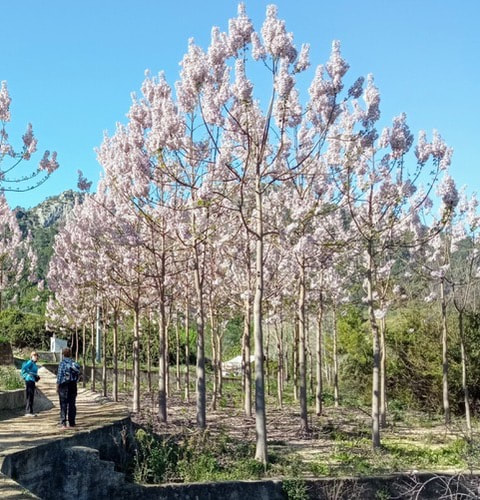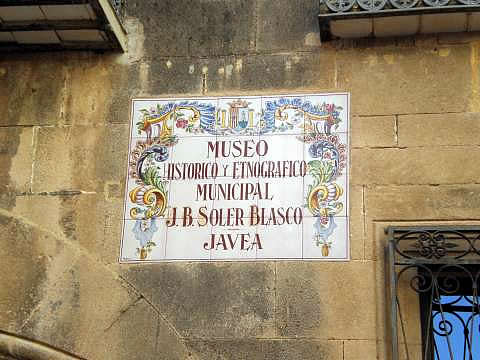|
… that the tall, straight trees with huge leaves and beautiful violet blossoms that we see beside the Gata road and in several other sites in Jávea are called “Paulownia” ?
This tree was named in honour of the 18th century Grand Duchess Anna Pavlovna of Russia, Queen consort of the Netherlands. Although it is native to China, Laos and Vietnam, Paulownia has long been commercially cultivated in Korea and Japan. It is known in English as the Empress tree, Princess Tree, Sapphire Princess, Sapphire Dragon and Foxglove tree. Several species and hybrids of Paulownia have been introduced to Spain in recent years. It is said to be the fastest-growing hardwood tree, being harvested after 8 years. After harvesting, new trees sprout from the roots. It can be trained to grow tall and straight without knots and produces a wood known as “kiri”. This is fine-grained and very light, but also strong and ideal for the manufacture of many items such as lightweight furniture, guitars, surf boards, skis, boxes and even bee-hives. It is resistant to pests and is fire resistant up to 400ºC. Its foliage can be used for animal feed or biofuels and its flowers attract honey bees. In short, it could become a very valuable crop. Xàbia’s agricultural landscape has changed many times over its long history and one day the fragrance of Paulownia flowers may replace the perfume of the orange blossom we smell today.
0 Comments
|
ACTIVITIES
Categories |
- Home
- Blogs
-
Projectes
- Premio de Investigación - Formularios de Inscripción
-
Traducciones Translations
>
-
DISPLAY PANELS - GROUND FLOOR
>
- THE STONE AGES - PALAEOLITHIC, EPIPALAEOLITHIC AND NEOLITHIC
- CAVE PAINTINGS (ARTE RUPESTRE)
- CHALCOLITHIC (Copper) & BRONZE AGES
- THE IBERIAN CULTURE (THE IRON AGE)
- THE IBERIAN TREASURE OF XÀBIA
- THE ROMAN SETTLEMENTS OF XÀBIA
- THE ROMAN SITE AT PUNTA DE L'ARENAL
- THE MUNTANYAR NECROPOLIS
- ARCHITECTURAL DECORATIONS OF THE PUNTA DE L'ARENAL
- THE ATZÚBIA SITE
- THE MINYANA SMITHY
- Translations archive
- Quaderns: Versión castellana >
- Quaderns: English versions >
-
DISPLAY PANELS - GROUND FLOOR
>
- Catálogo de castillos regionales >
- Exposició - Castells Andalusins >
- Exposición - Castillos Andalusíes >
- Exhibition - Islamic castles >
- Sylvia A. Schofield - Libros donados
- Mejorar la entrada/improve the entrance >
-
Historia y enlaces
-
Historía de Xàbia
>
- Els papers de l'arxiu, Xàbia / los papeles del archivo
- La Cova del Barranc del Migdia
- El Vell Cementeri de Xàbia
- El Torpedinament del Vapor Germanine
- El Saladar i les Salines
- La Telegrafía y la Casa de Cable
- Pescadores de Xàbia
- La Caseta de Biot
- Castell de la Granadella
- La Guerra Civil / the Spanish civil war >
- History of Xàbia (English articles) >
- Charlas y excursiones / talks and excursions >
- Investigacions del museu - Museum investigations
- Enllaços
- Enlaces
- Links
-
Historía de Xàbia
>
- Social media
- Visitas virtuales
- Tenda Tienda Shop



 RSS Feed
RSS Feed
